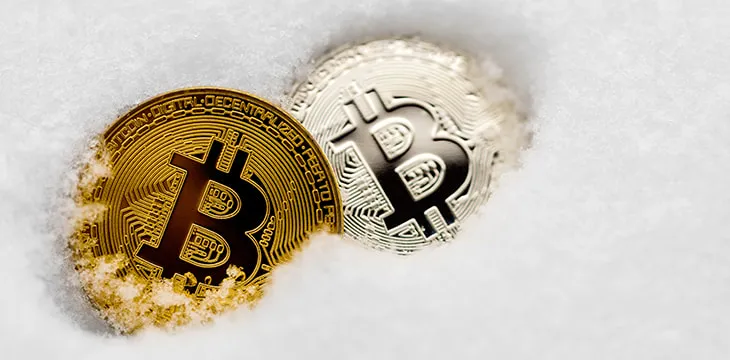|
Getting your Trinity Audio player ready...
|
LUNA crash has been casting storm clouds over the cryptocurrency industry news lately, and for all the wrong reasons. Investors are full of doubts and questions, and entrepreneurs are concerned. BTC came down to as low as US $17,000, and Ethereum followed suit along with other trendy coins.
Are investors who invested their life savings into digital currency in for a long-term loss, or will they be able to catch up after some time? Depending on the digital currency, some investors might catch up eventually, while those invested in various unknown NFTs, expecting a greater return, might be in for a long-term loss.
It appears dark and gloomy, so industry thought leaders call this ongoing downfall the crypto winter. In a recent conversation with eCarbon CEO Joshua Fernando, we discussed the what, when, and hows of the digital currency crash.
What is LUNA crash?
A UST (aka Terra), the coin meant to mirror the value of the U.S. dollar by allowing users to exchange 1 UST for the equivalent of US $1 in another coin called LUNA, and vice versa. A protocol named Anchor supposedly held nearly 75% of UST’s circulating supply, giving the depositors 20% yields on their UST. Eventually, withdrawals of UST from Anchor created a vicious cycle that led to massive withdrawals, resulting in LUNA’s price dropping in tandem with UST.
Fernando shared his insights, pointing out that it is important to note that while $UST acts as a currency, it was only partially backed by actual reserves, similar to how gold is used to back the U.S. dollar.
“This lack of redemption meant it had no inherent value, resulting in the ‘bank run,'” he said.
When will the ‘crypto’ winter end?
According to Fernando, the so-called crypto winter will last as long as consumers remain fearful of the economy.
“Crypto will be a lagging indicator out of an economic pullback, rather than a leading indicator as it was coming into the economic pullback. Investors are quick to pull out of “riskier” assets and slow to reenter when fears are high. When dollars return in strength to equities, that will be the signal for crypto buyers to return with a vengeance.
“At a minimum, the crypto winter will last through October 2022, with perhaps a mild bounce back in the interim due to the oversold nature of crypto markets. It is reasonable to believe that the crypto winter will last until July 2023. Crypto follows a frequent boom and bust cycle, usually every 2-4 years, so a bust was due,” Fernando said.
The slump might push people to focus more on the technology aspect of the digital currency spectrum instead of solely focusing on reckless trading. Sharing his thoughts about it, Fernando said it would result in more due diligence, temporarily, though. This slump and the LUNA crash will be on everyone’s mind for a while, especially when they pick their next Bitcoin investment.
“They will focus on understanding the foundational mechanisms of their coins this time and invest in things with much more discipline. Then the bull market will come back and assuming regulation hasn’t arrived, meritless projects will skyrocket in value as they have in the past,” Fernando stated.
On the flip side, Fernando noted, people will slowly forget about their newfound due diligence practices when they see the returns from shallow projects.
“They will dip their toe into them and then they are hooked. Before they know it, due diligence is out the window, and they are making unsustainable returns (on paper) until the next crash puts them in a net negative position once more. Then the cycle continues,” he explained.
Fernando believes that BTC, in particular, will push past this slump and thrive even more than before because “it is too ingrained into all things DeFi,” followed by Ethereum‘s Solana because it has too much true utility and potential.
“Solana has many natural advantages (speed, cost, etc.), but adoption has remained comparatively low. Perhaps the crypto winter will allow for some self-reflection and a turn towards fundamentals. If so, Solana will be a winner,” he opined.
Fernando told CoinGeek that it would take some time, but the digital currency industry will bounce back unless excessive regulations come into effect. He mentioned Tulip Mania and similar historical instances, pointing out that “we” are still playing with the Greater Fool Theory in plain sight with NFTs (not all of them, but many).
What are your thoughts on stablecoins?
“Stablecoins serve an important purpose in the crypto ecosystem, but they are currently poorly implemented. For collateralized (crypto or fiat) stablecoins, the fundamental problem remains the right of redemption,” Fernando answered.
“A clear example of this is how Terra/UST’s billions in BTC reserves failed to serve as a bulwark against a selloff. While Terra/UST was primarily an algorithmic stablecoin, it proved the futility of reserves in concept. In the end, stablecoins are at the mercy of network trust,” he added.
How can we ensure this doesn’t happen again? Fernando opined that regulation needs to come to avoid similar situations. These things will still cyclically happen with stringent regulations in place. However, he said, “they will not get this extreme.”
Watch: The BSV Global Blockchain Convention panel, The Future World with Blockchain
https://youtu.be/v9hDGDoy1mM

 07-06-2025
07-06-2025 





